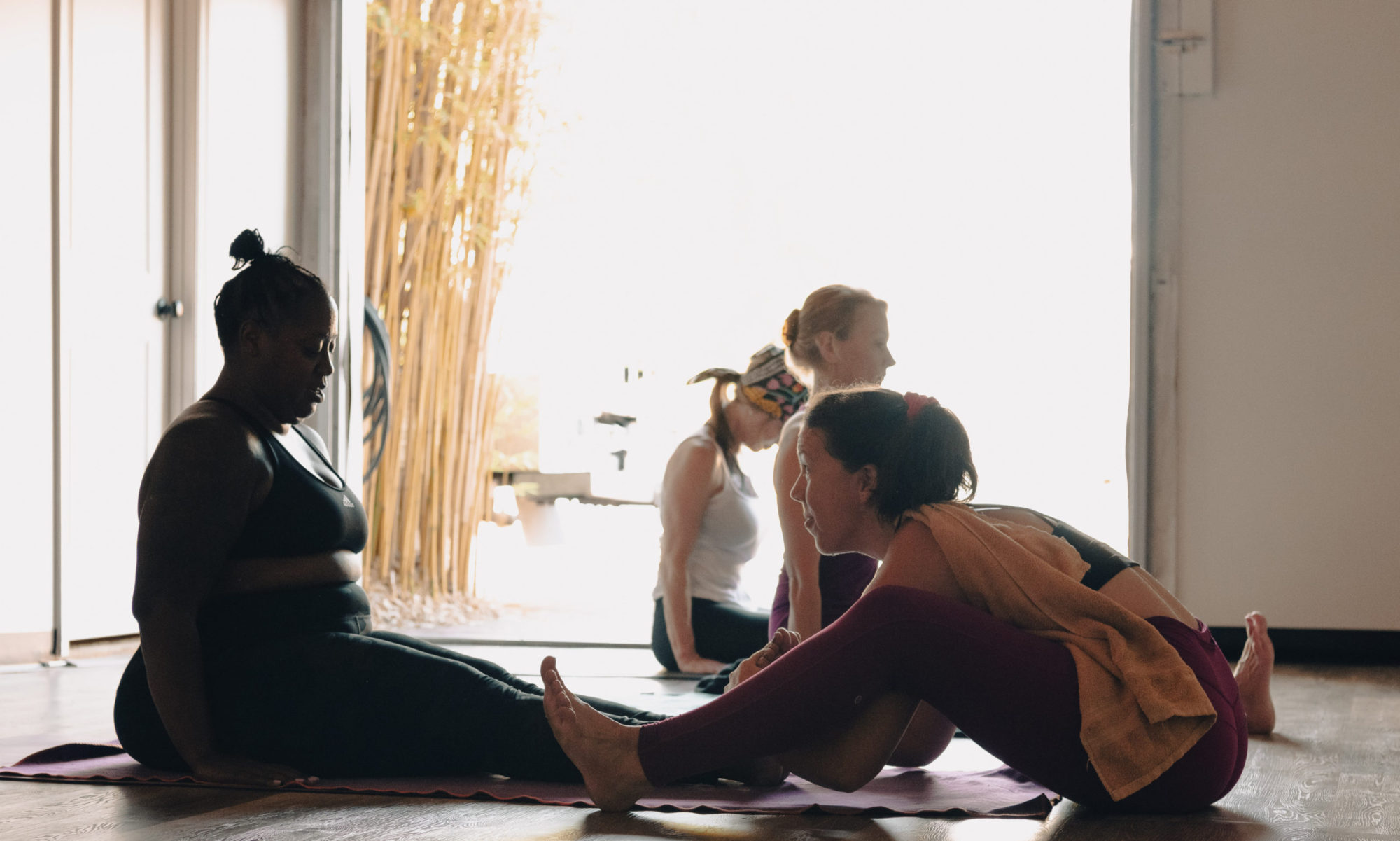In our posture practice, we often hear instructors using Sanskrit in their cues and it can be hard to understand exactly what they’re trying to help you with.
A cue like ‘engage your bandhas’ would often times be a guide from your teacher to find steadiness from the pelvis and lengthen your spine to support the work you’ll be doing in the posture of the moment. But what does it mean to ‘engage your bandhas?’
Over the 12 plus years I’ve been practicing Aṣṭāṅga Yoga, I’ve noticed that using the bandhas in posture practice often means something quite unique to each student. In general, the use of the bandhas will give you control over your center of gravity (mūla bandha) and help you keep your spine healthy and long (uḍḍīyana bandha).
Known as the abdominal lock or upward lifting lock, uḍḍīyana bandha will
- provide support the the spine
- help ease pressure from the lower back
- support healthy postural
- keep you standing tall later in life
- aid in healthy digestion and elimination
- help foster confidence and grace in challenging postures, and more!
PLEASE NOTE: Uḍḍīyana bandha, used in āsana practice is different than uḍḍīyana bandha kriyā. Uḍḍīyana bandha kriyā is a cleansing practice that involves breath retention and is NEVER done during āsana practice.
In āsana practice, the firm and steady contraction of the transverse abdominus will help students to keep their spine long and healthy while executing any posture. And when used with mūla bandha, these two engagements work to flush the body with vital healing energy. Additionally, the proper use of the bandhas fuels the energetic body and ignites the transformative aspects of yoga.
The physical postures will be safer with the use of mūla and uḍḍīyana bandhas, even if those poses are still really crazy and really hard. You will have greater control over your center of gravity and your spine will be supported. Uḍḍīyana bandha is especially important and useful for those who are experiencing lower back pain.
Contraindications:
- Pregnancy
- While recovering from abdominal surgery
- There also may be other reasons your teacher advises against the use of uḍḍīyana bandha. Please connect directly with your teacher if you have any questions or concerns.
Advice for finding, feeling and experience uḍḍīyana bandha:
- Feel the space of the lower abdomen, between the bony parts in the front of the pelvis, above the pubic bone and below the navel.
- Firm this space of the lower abdomen, and imagine it could gently pull back toward the spine, while not restricting the breath.
- Observe the way your body responds to this engagement.
- Sometimes, placing your open palm on this area, above the pubic bone and below the navel, can help you to feel the subtle contraction of these muscles.
Directions to engage uḍḍīyana bandha:
- Sit in a comfortable meditative posture with the pelvis upright
- Close the eyes and find softness throughout the body
- Feel the breath natural and effortless
- Allow your awareness to shift to the lower abdominal region
- Contract the transverse abdominus and hold this contraction steady while taking a conscious inhale, release as you mindfully exhale
- Continue this rhythm of contraction and release with natural breath and continual awareness
Uḍḍīyana bandha is a valuable and transformative aspect of the posture practices in yoga. This subtle engagement can support a long and healthy yoga practice. Try finding this stability, this strength at the midline of the body the next time you roll out your mat and observe the way your body responds.

* About Jessica
You Might Also Enjoy:
- Mūla What?! Insights into mūla bandha
- Ashtanga, Pregnancy and That First Year
- Truth Matters
- Always Looking, Never Seeing
- Returning to the Mat
- Yoga Doesn’t Really Mean Union
- Three Gifts
- What Does It Really Mean To Practice Non-Attachment
- Ashtanga Opening Mantra
- Yoga To Sleep Better At Night
- Some Truth About Ashtanga Yoga
- Yoga Brings Out The Worst In Me
- Catvāri cringe
- Into The Shadows – the elusive search for happiness in Ashtanga Yoga
- …and in all earnestness
- Ashtanga Yoga and the Ego
- Guru Gratitude
- 5 Ways to Find Joy, Even When You’ve Got The Grumps
- The Grateful Game
- Yoga And The Quest To Know It All
- Standing Up From Backbending – How I Overcame My Fears
- Keeping Guruji With You When You Practice
- The Heart of Ashtanga Yoga: The Tristhana Method
- Ashtanga Yoga is a Breath Practice. Seriously, It REALLY Is
- The Seven Words that Changed My Practice
